Hewn From the Living Rock
When planning our visit to Ethiopia it was Lalibela’s rock churches that were top of the ‘must-see’ list. Lalibela is located in northern Ethiopia and you can fly direct from Addis Ababa, although we had spent some time exploring Gondar and the wonderful Simien mountains beforehand, so flew in from Gondar.
The town is named after the late-12th and early-13th century King Gebre Mesqel Lalibela of the Zagwe Dynasty, who was highly revered and was reputed to have commissioned the construction of the churches, but it is more likely that they were built over several centuries. Although the devout claim that holy angels played a part as well.
The churches, which were designated a UNESCO world heritage site in 1978, date from the 7th to the 13th centuries. They are remarkable because rather than being constructed from the ground up, they have been hewn from within the rock, using basic tools such as chisels and hammers, and were built from the top down and then carved from within. There are three main groups: northern, eastern and western. It will take more than a day to explore them thoroughly so make sure you factor in enough time.
You need to purchase a ticket at the main office – this is valid for five days. It’s not cheap but is definitely worth the price. You need to make sure that you keep your ticket as you may need to produce it when you enter each church. It’s generally okay to take photos (keep an eye out for signs indicating if photography is prohibited) but if you are taking photos of someone (and we found that many of the priests encouraged us to do so) it is polite to tip them.
We also recommend getting a guide as they will be able to tell you the history of each of the churches as well as point out some of the more interesting features. The churches are open from 8am-5.30pm, but are closed for two hours at lunchtime, around midday.
These are very much living churches, highly revered by Ethiopian Orthodox Christians, and a place for pilgrims to visit. We were welcome to join the services.
We explored each cluster of churches in turn. The churches within each group are linked by subterranean passages.
The Northern Group Of The Lalibela Ethiopia Churches
Biete Medhane Alem, believed to be the largest monolithic church in the world, at approx 33 metres long, 23 metres wide, and 10 metres deep, is home to the Lalibela Cross. It has five aisles and its name means ‘Saviour of the World’.
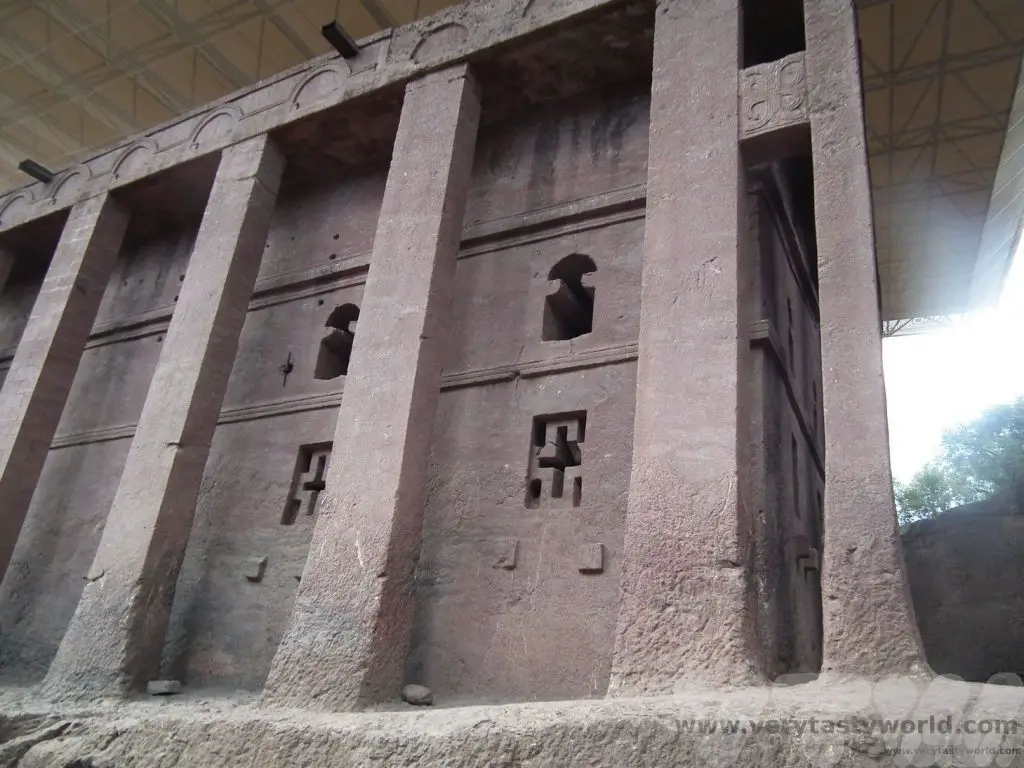
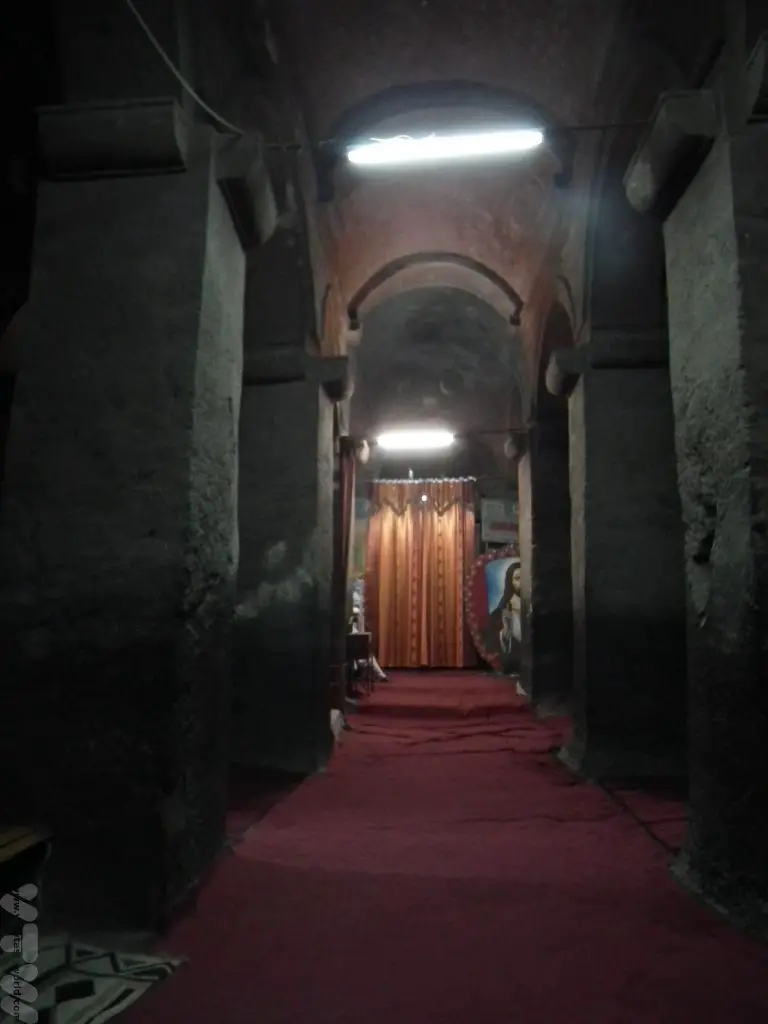
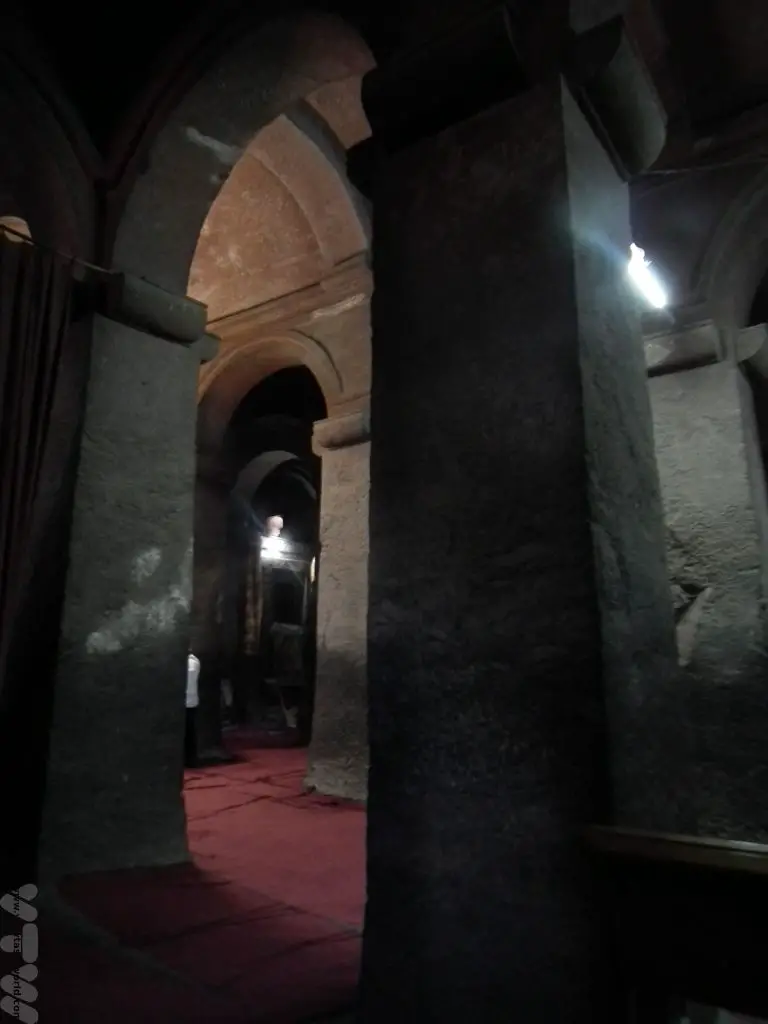
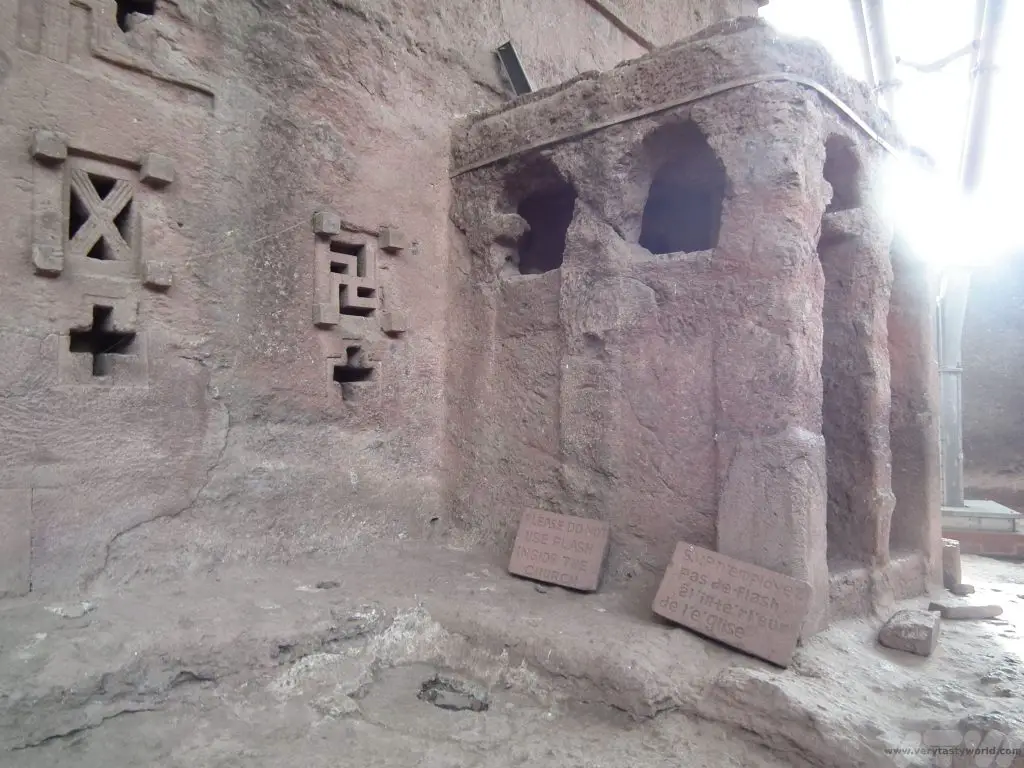
Biete Maryam may be the oldest of the churches, named for Mary.
It has an incredibly deep pool outside which is believed to grant fertility to any woman who bathes in it.
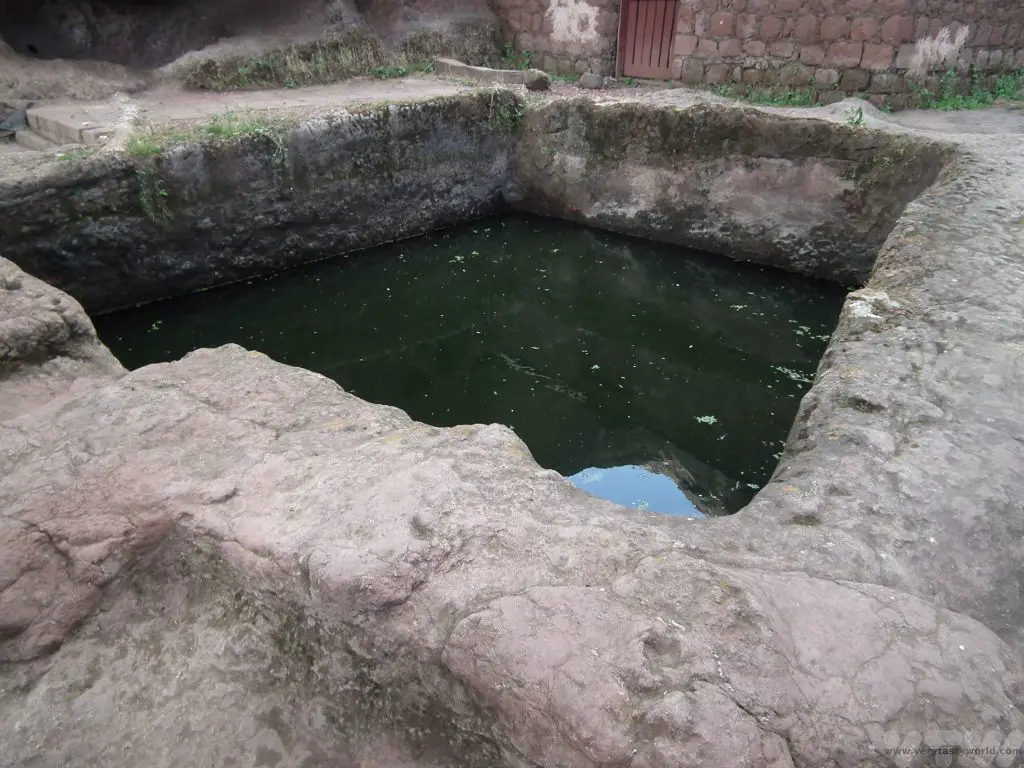
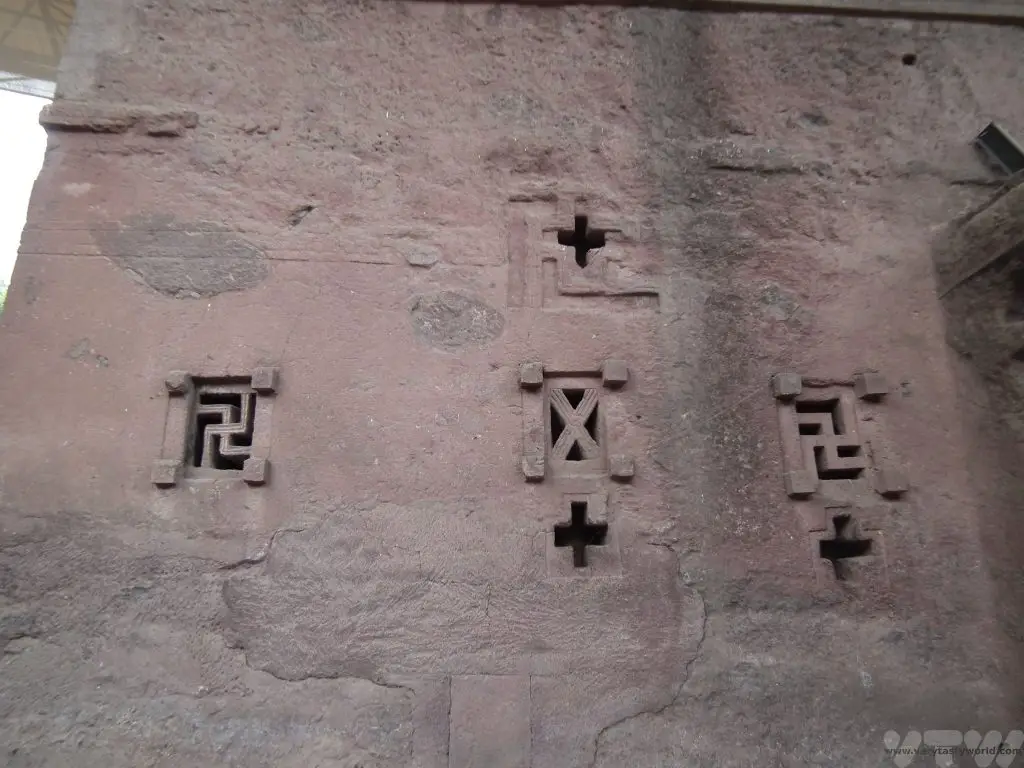
Biete Golgotha Mikael is said to contain the tomb of King Lalibela himself.
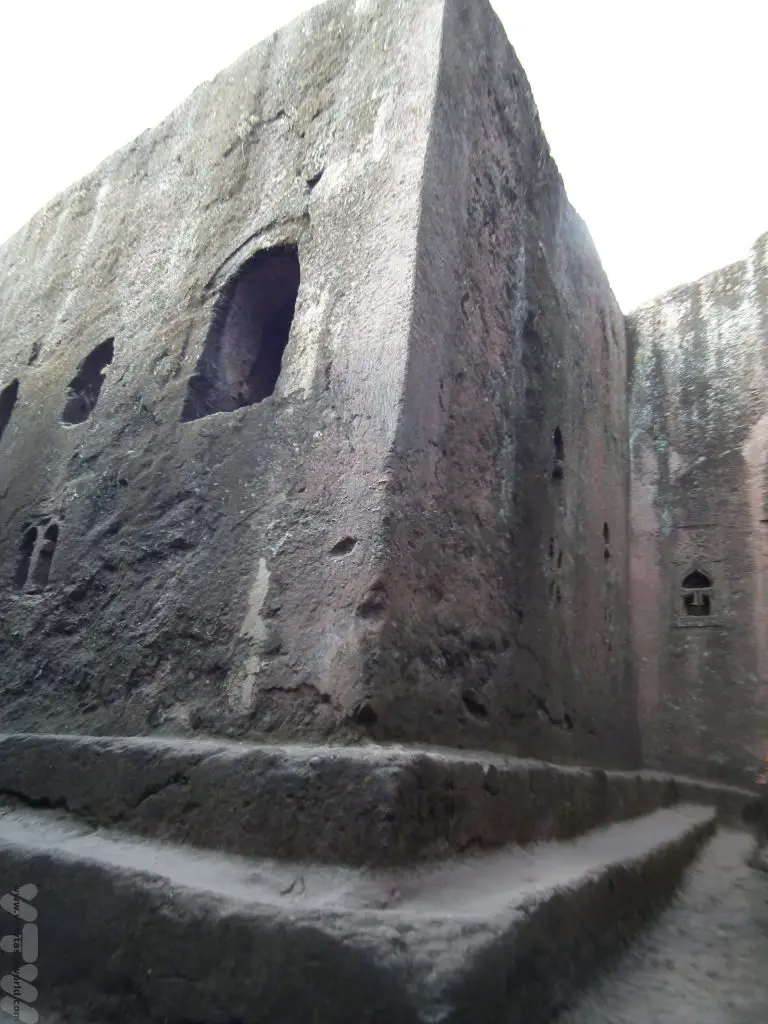
The Eastern Group Of The Lalibela Ethiopia Churches
It is thought that some The Eastern Group may have been used as royal chapels or palaces.
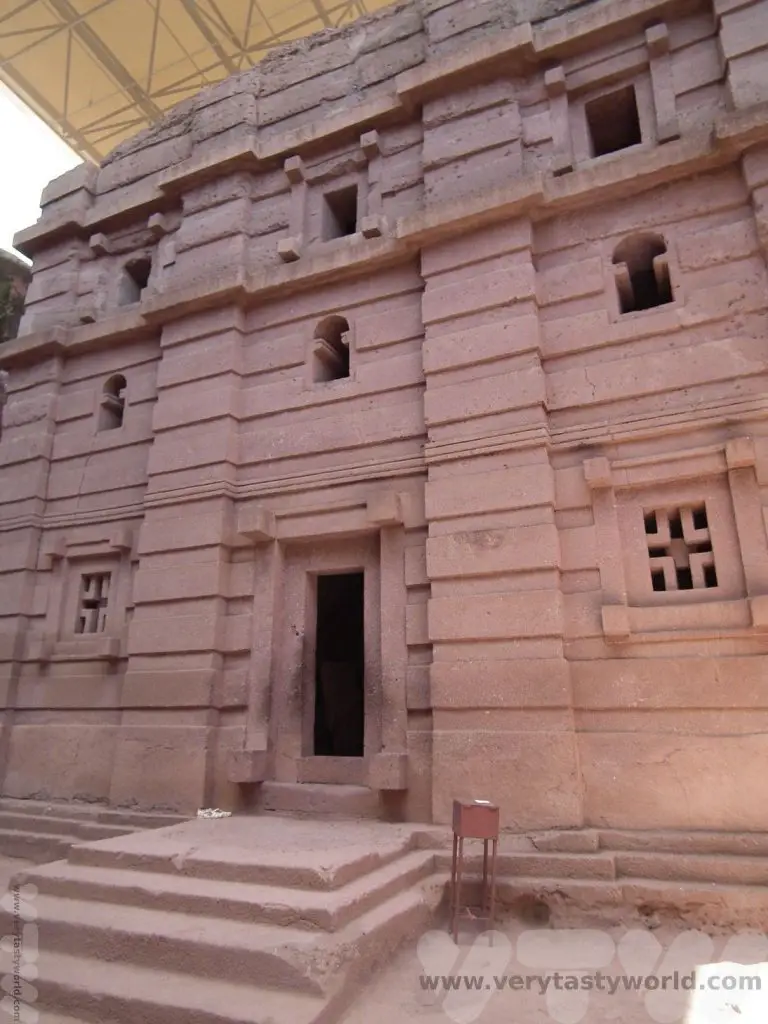
Biete Amanuel (House of Immanuel), possibly the former royal chapel.
At Biete Abba Libanos you can see how the church was carved downwards from inside the rock.
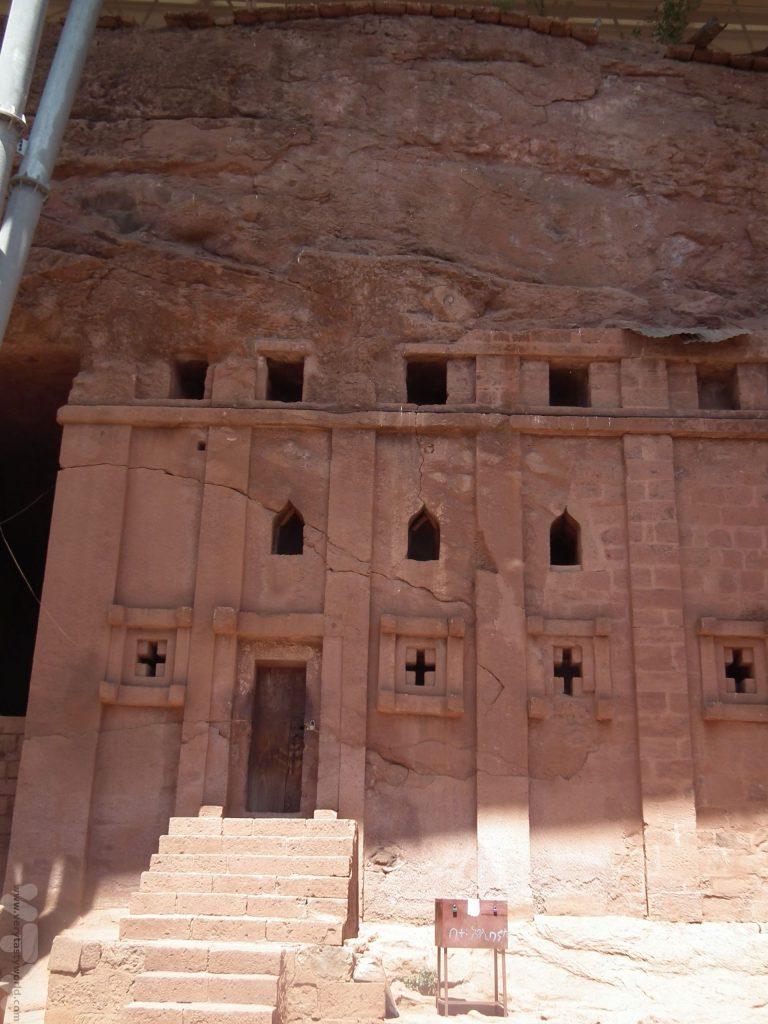
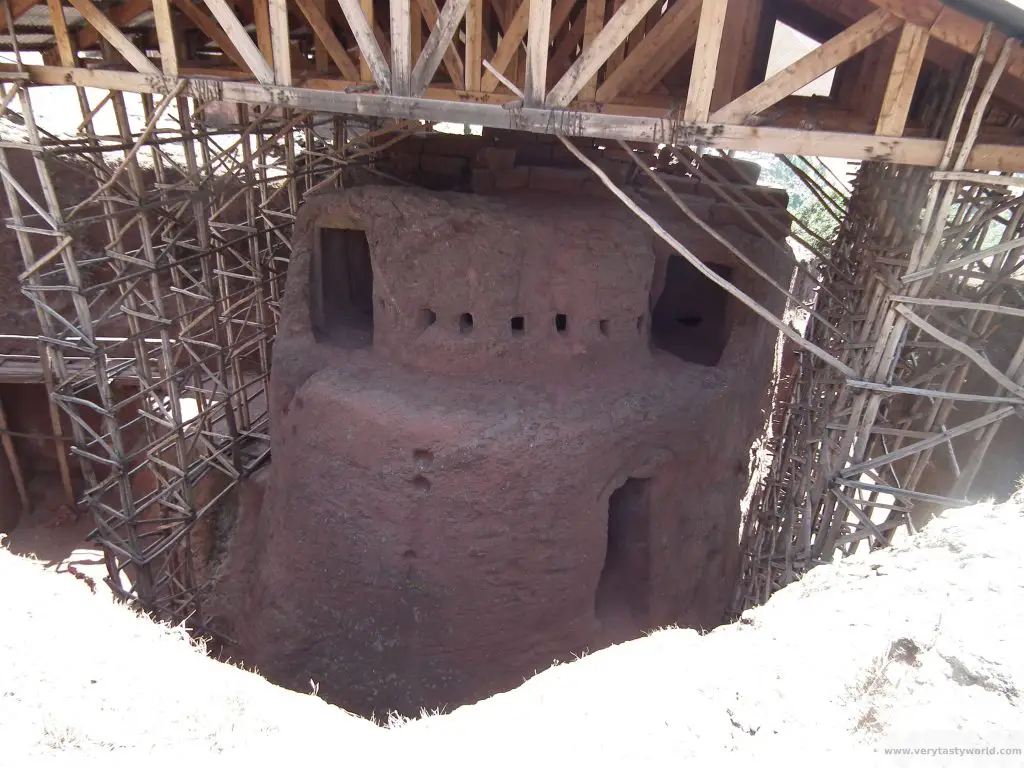
Biete Lehem is the house of bread.
The Western Group Of The Lalibela Ethiopia Churches
Last, but by no means least, Biete Ghiorgis, the church of St George, which takes a cruciform shape, and is the most beautiful of the churches.
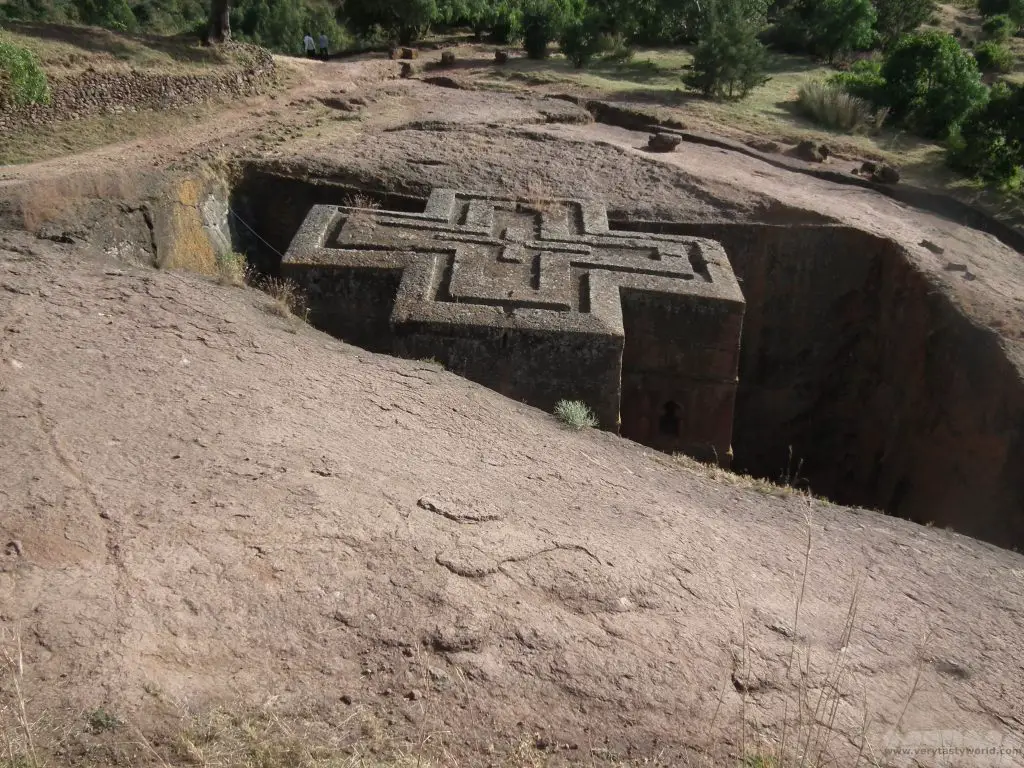
You cannot see it on your approach, so well is it hidden. (Actually you have to be careful not to fall into the courtyard.)
It also appears to be totally inaccessible but there is a passageway carved into the rock behind the church and you walk through a tunnel to arrive at the main entrance.
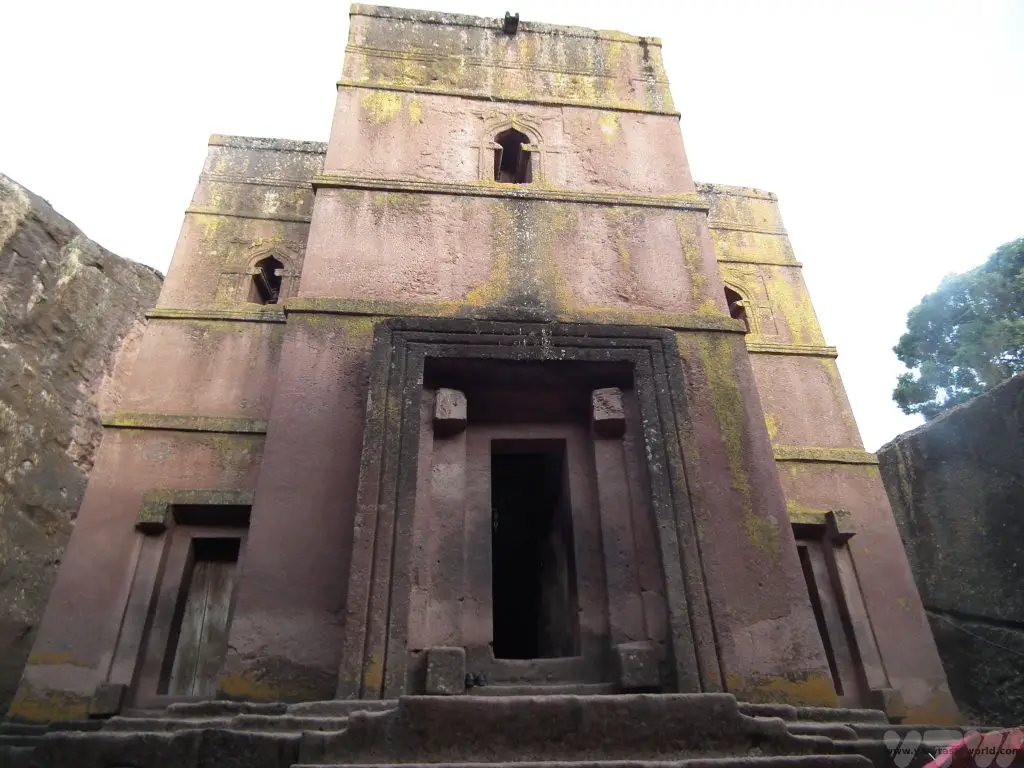
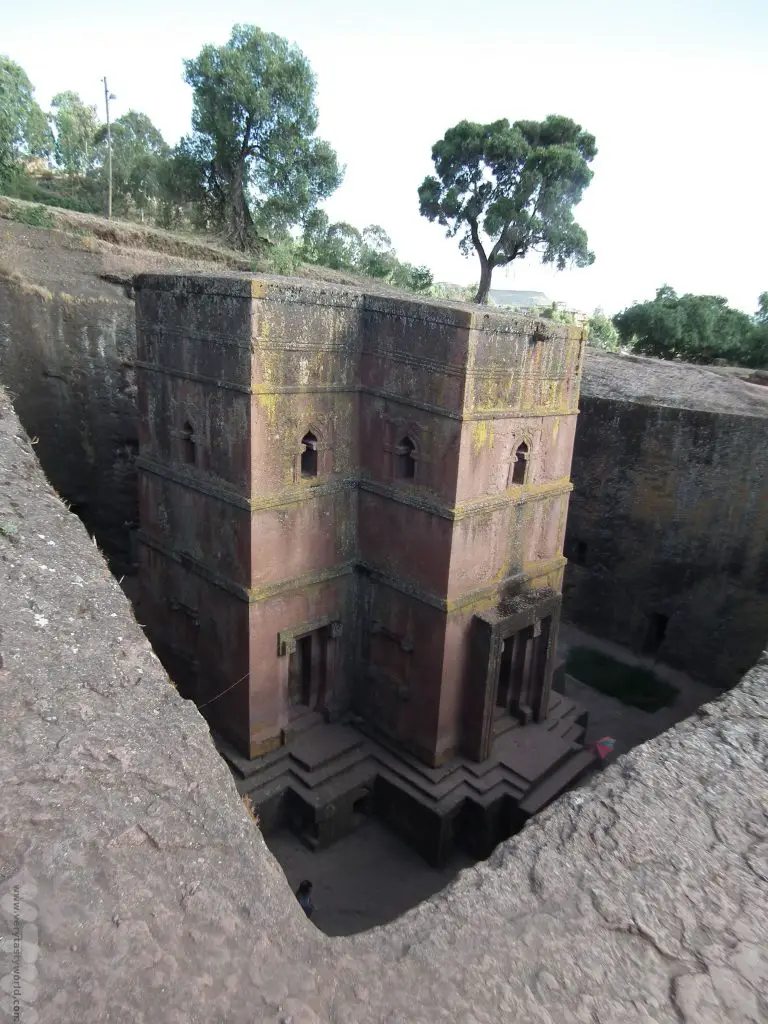
Day Trip from Lalibela
While you’re in the area, it’s also possible to visit Yemrehanna Kristos which is located around 20km from Lalibela. This would make for a pleasant morning or afternoon trip.
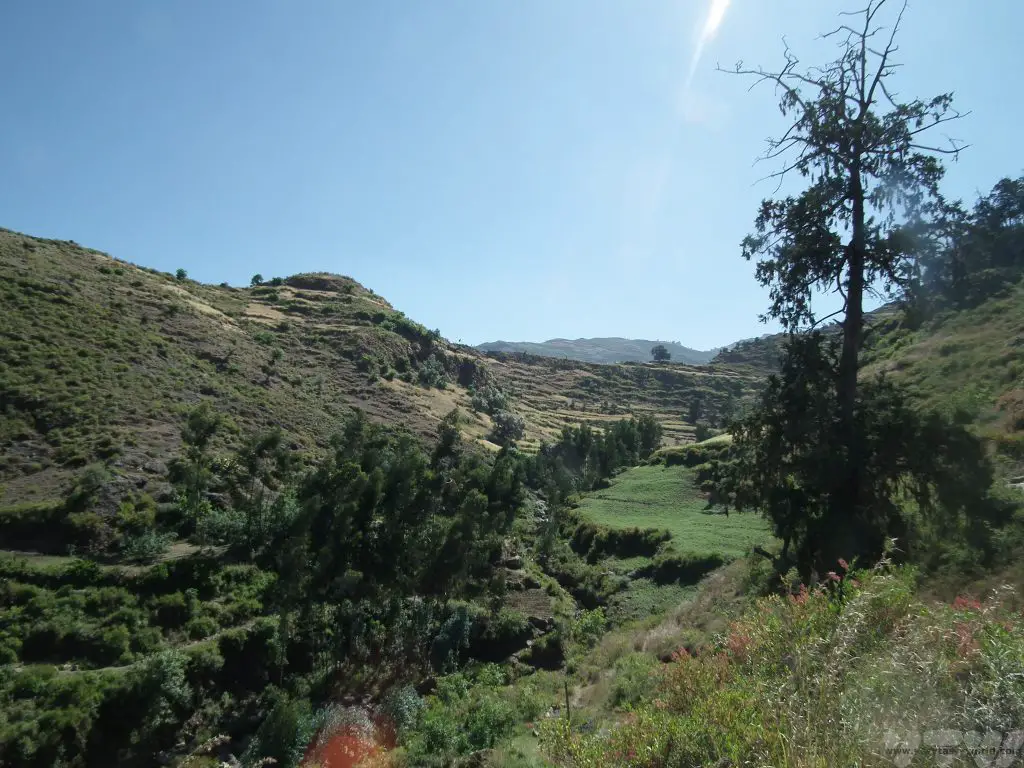
The church here is built inside a large cave on Mount Abuna Yosef. The church is named for Ethiopian king Yemrehana Krestos who reigned in the 11th Century.
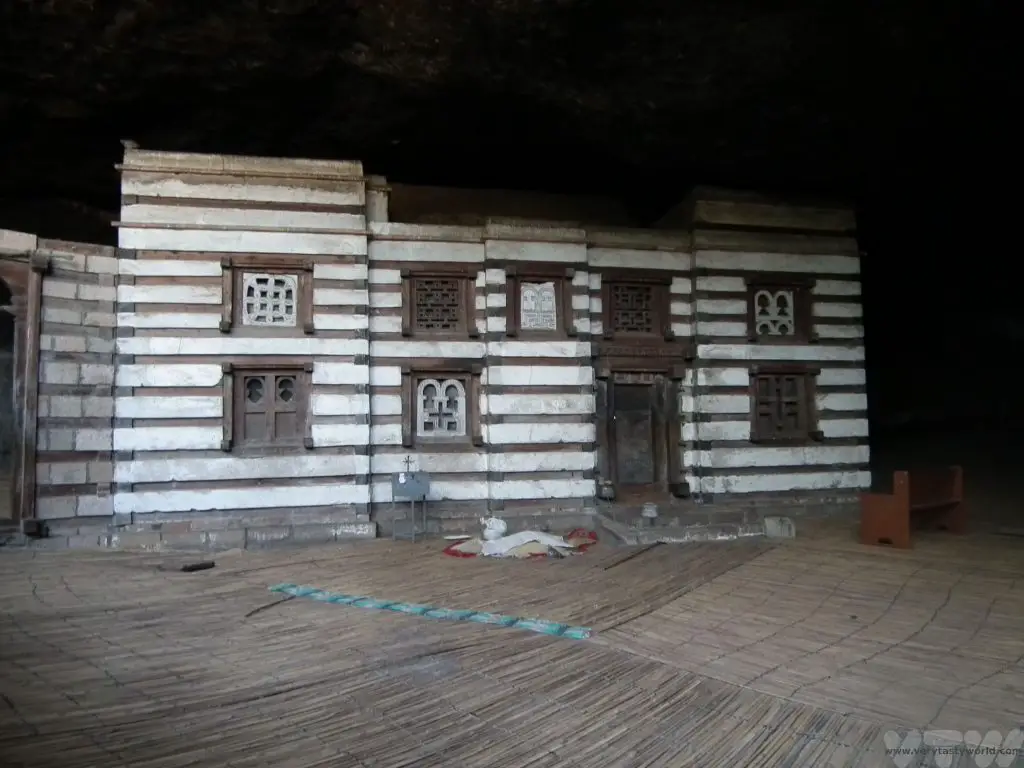
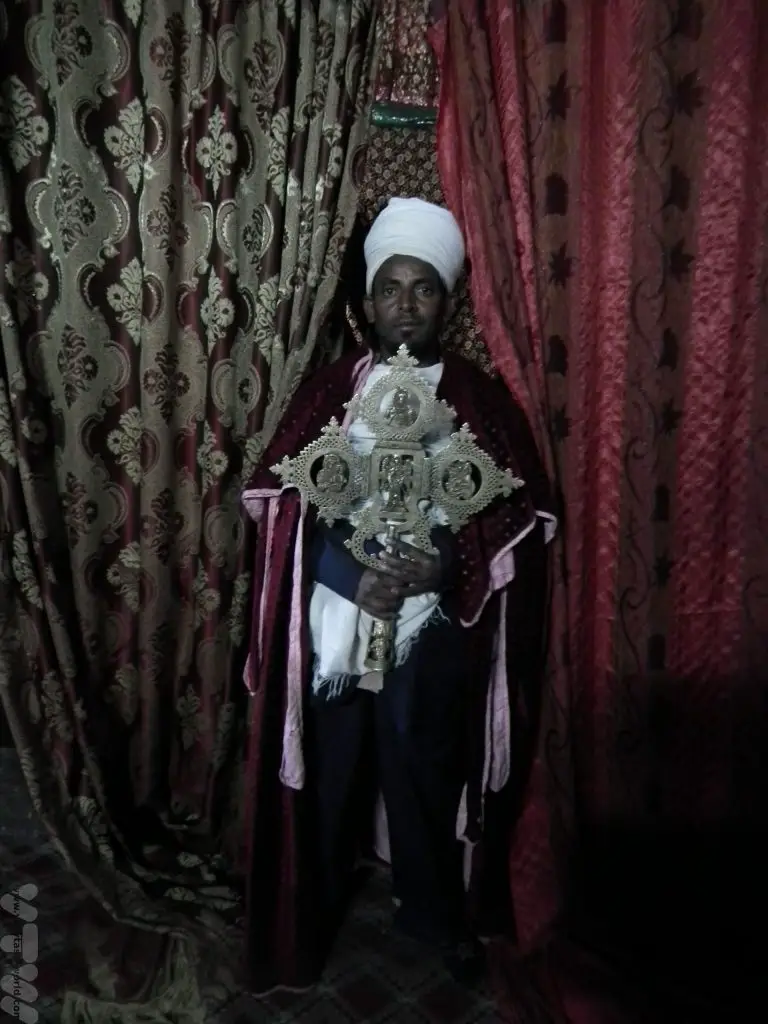
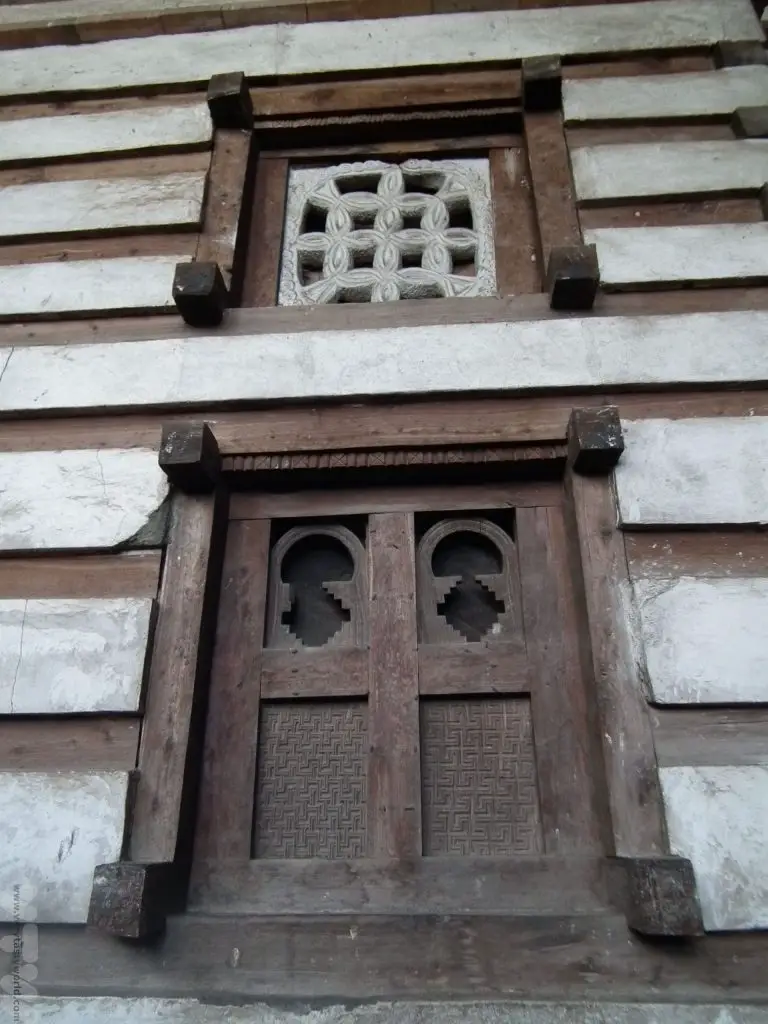
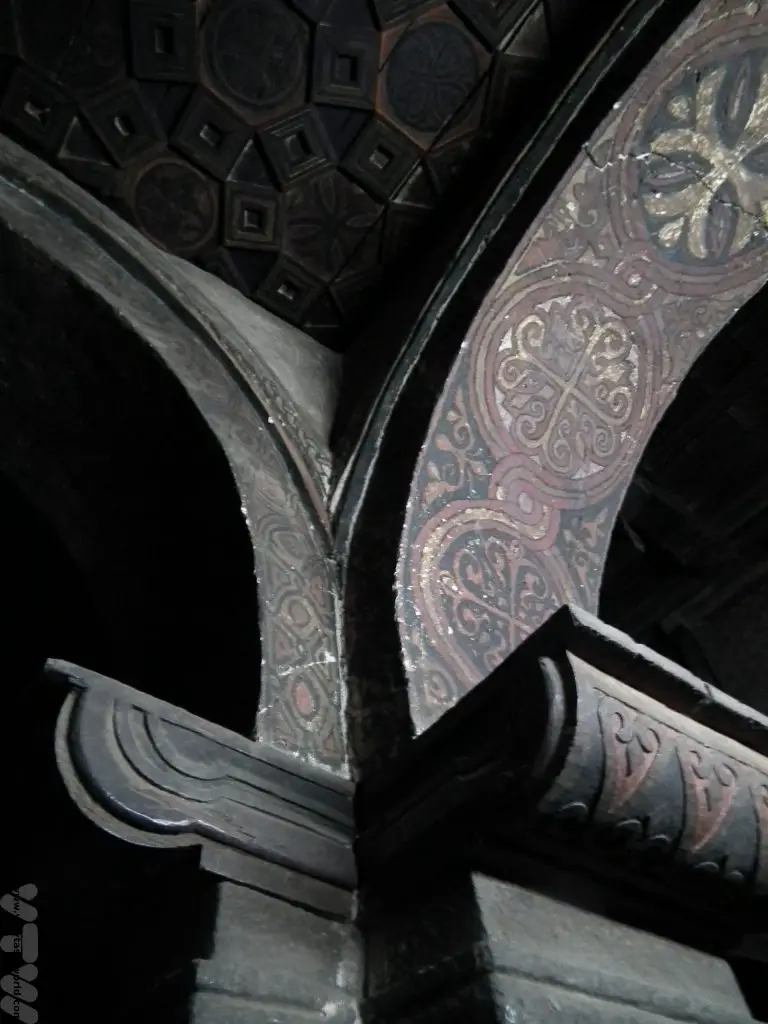
The area is known for its honey. There is a legend that Gebre Mesqel Lalibela was surrounded by a swarm of bees shortly after his birth. Apparently his mother believed it to be a sign of his future greatness. Whether the legend is true or not, make sure you get to taste the local honey, it is absolutely delicious.
And if you want a tip for a good restaurant at the end of the day’s sightseeing you can’t go wrong with Ben Abeba. The building has a highly unusual design and you can either sit indoors or outside – we recommend the latter as there are some splendid views, especially if you time your visit for sunset. The food on offer is slightly unusual – of course, you can have Ethiopian food, but somewhat surprisingly there are a number of Scottish dishes on the menu! The restaurant is run by a very friendly Scots lady who now lives in Lalibela.
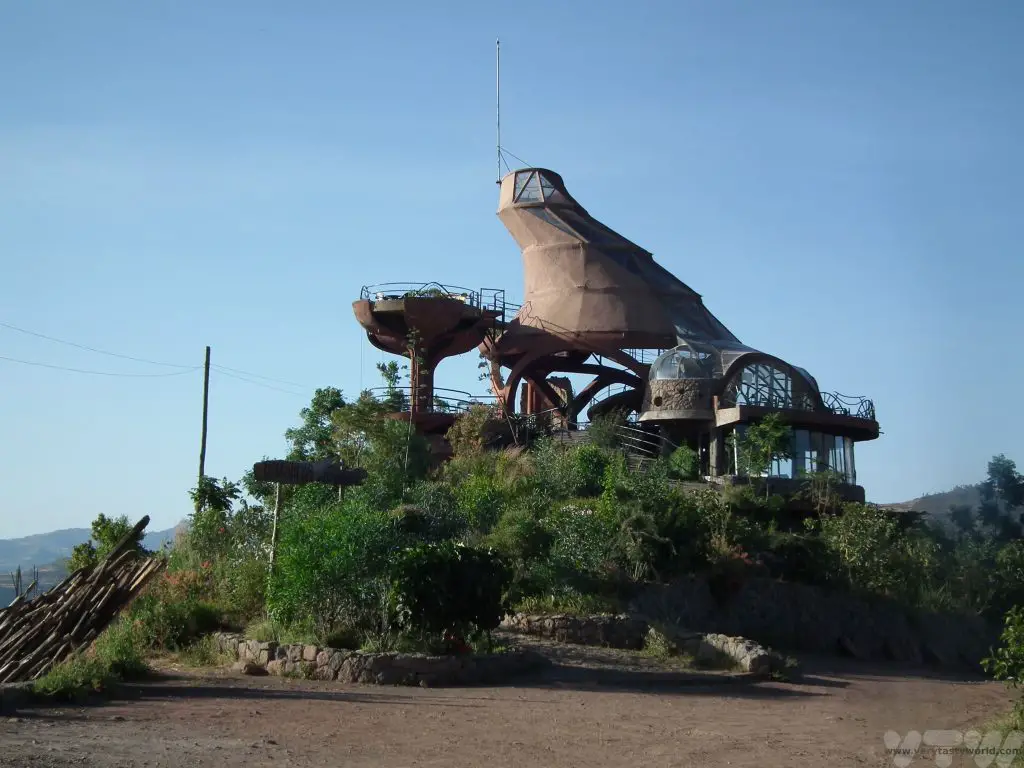
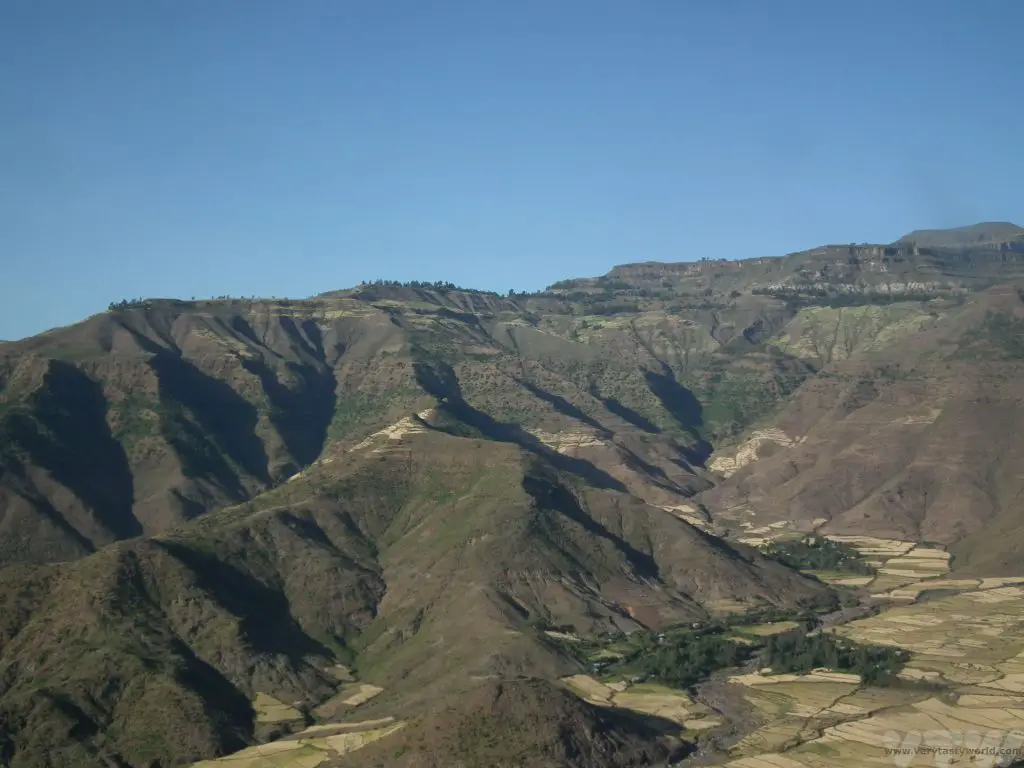

You can explore the Lalibela churches online via The Zamani Project who can offer several digital tours, including maps, photos, panoramas and 3D models of the site.





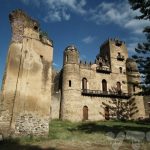



That looks amazing. Also I never thought about a virtual visit. Great post as usual.
Thank you so much. We loved the The Zamani Project initiative – so good to be able to visit virtually.
I didn’t know you could go inside some of these churches – that moves these further up my list of places to explore. I have wanted to go here ever since I saw a programme about them last year on TV – I think it was Ben Fogle’s programme. He also did a mini-docu on the Scottish lady restauranteur of Ben Abeba. The buildings are so unique, unlike anything I’ve seen before and that restaurant is equally unique.
Until the recent war in the north of country (especially around here) Ethiopia an emerging tourist destination. I hope they can resolve the war and peace is restored to the area,
Ethiopia is a fantastic tourist destination and we were very sad when we heard that war had broken out. We really hope that peace can be restored as soon as possible. The churches are some of the most remarkable constructions we have ever seen – we learned of them many years ago and had always wanted to visit. The Ben Abeba restaurant was fantastic – the construction was so unusual and the food was really tasty as well.
Those are fascinating! I’ve never heard of them before (or if I have don’t remember anyways). Great picture. Any theories on why they built them like that? Lack of resources? Some divine purpose?
Thank you. They really are remarkable. One theory we learned about why they were built downwards was so that if you looked across the landscape you would not be able to see any of the churches from a distance – a means of keeping their location secret. The Church of St George is so well hidden that you could easily fall into its courtyard – you really don’t see anything other than hillside until you are right next to it.
[…] And, of course, Lalibela, where the rock churches are as spectacular as we were promised many years before. […]